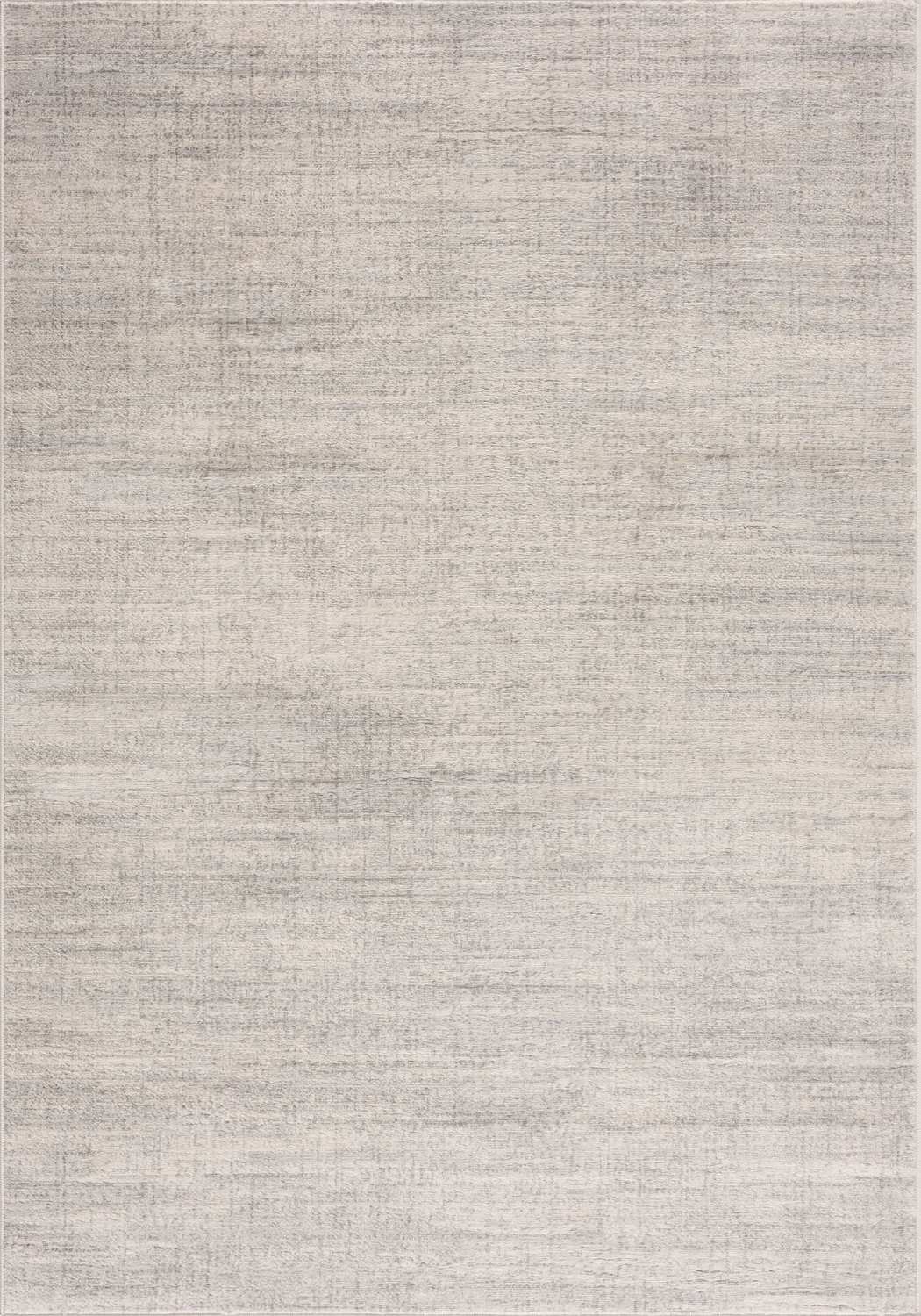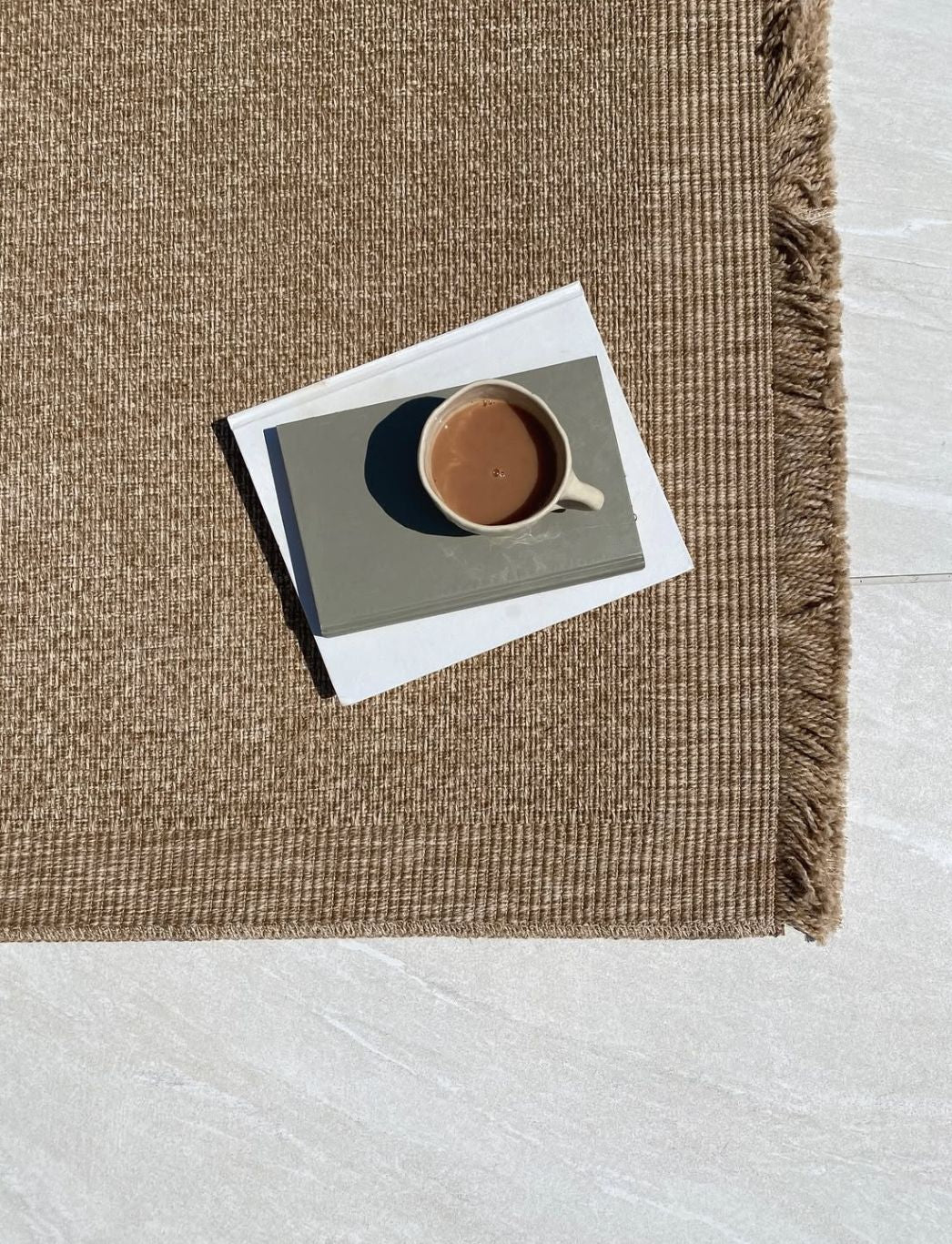How to Get Gum Out of a Rug in Under 10 Minutes
You might have found gum stuck in your rug and wondered how to remove it without damaging the fibres. Many households face this sticky situation, especially those with children.
The most effective approaches to removing chewing gum from carpet fibres utilise temperature rather than physical force. Quick action prevents the gum from embedding deeper into the fibres and causing more damage over time.

The solution is simpler than you might think. Your success depends on using the right remedies and taking your time. This piece will show you how to remove gum from carpet in under 10 minutes. We'll use simple household items and proven techniques that protect your rug's delicate fibres.
Identify the Gum and Act Fast
My first step after spotting gum on a rug is to figure out what I'm dealing with. The right identification can make the difference between a quick cleanup and damaged rug fibres.
Check if the gum is fresh or hardened

You need different approaches to remove fresh versus hardened gum. Fresh gum just landed on your rug and stays soft and pliable. Since it hasn't worked its way into the carpet fibres yet, you can remove it more easily if you act fast.
Hardened gum tells a different story. It might look dry on top, but could still stick underneath. The gum bonds more firmly with the fibres the longer it sits there. People walking over it push the gum deeper into the carpet and make it harder to clean up.
A butter knife helps me check if the gum is fresh or hard. I touch the edge (not the centre) gently. Fresh gum gives way easily. Semi-hardened gum feels solid but still has some stickiness to it. Rock-hard gum breaks and won't bend.
Understand the type of gum (chewing, bubble, sugar-free)
The type of gum stuck in your rug shapes how you'll get it out. Here's what you should know about different gums:
Chewing gum: The soft, pliable texture lets it sink deep between rug fibres. Its synthetic rubbers and resins grab onto carpet fibres tightly, so you need the right technique to remove it.
Bubble gum: This stretchy variety spreads more when stepped on. It often covers more of your rug and needs careful containment during cleanup.
Sugar-free gums: These react differently because of their synthetic bases. Heat-based removal methods don't always work as well on sugar-free varieties.
Look at the gum's texture and stickiness before you start. This helps you pick the gentlest and most effective way to lift it without hurting your rug.
Why timing matters for easy removal
Quick action is key with gum on rugs! Fresh gum won't embed deeply into the carpet if you tackle it right away. The gum sticks harder to carpet fibres over time and becomes tougher to remove without damaging your rug.
The science makes sense – gum contains base materials, sweeteners, softeners, flavours and colours. These ingredients create a tough, flexible product that bonds well with carpet fibres.
You can avoid stubborn gum stains by removing them quickly. Fresh gum starts bonding with fibres right away, but it takes time to reach full strength. Those first few minutes give you the best chance for clean removal.
Don't scrub if someone drops gum on your rug. Scrubbing pushes gum deeper into carpet fibres. This turns an easy fix into a big problem. Instead, get ready to remove it properly using methods we'll cover next.
The right identification - fresh or hard, type of gum, and quick action - sets you up for success. Choosing the best removal method saves time and money and keeps your rug safe.
Gather Your Tools Before You Start
I always get my tools ready before dealing with gum stuck on my rug. Getting everything set up saves time and will keep my rug's delicate fibres safe during the cleanup.
Ice cubes and a plastic bag

The ice method is without doubt one of the best ways to get gum off carpets. I keep several ice cubes and a clean plastic bag handy. This works great because frozen gum gets hard and less sticky, which makes it easier to remove in one piece.
I put the ice cubes in a plastic bag and press it right on the gum for 15-20 minutes until it's really frozen. The plastic bag plays a vital role - it keeps water from soaking into your rug while the ice freezes the gum. For really tough spots, I sometimes make a bigger ice pack by filling a zip-lock bag with extra ice cubes.
Butter knife or spoon

A blunt scraping tool comes in handy once the gum hardens from the ice. I like using a butter knife or spoon because they're strong enough to lift the gum but won't hurt the carpet fibres.
The way you scrape matters - I scrape from the edges toward the middle of the gum with firm but gentle pressure. This keeps the gum from spreading to clean parts of the rug. I also hold my scraper at a 45-degree angle to lift the gum instead of pushing it deeper into the fibres.
White vinegar and cloth

White vinegar breaks down gum residue naturally. Its acid helps loosen the gum from carpet fibres, making stubborn bits easier to clean up. I warm some white vinegar in the microwave because warm vinegar works better than cold.
I take a clean, light-coloured cloth and dab the warm vinegar on any leftover gum. Then I wait 2-3 minutes so the vinegar can soak in and break down the gum before I try to remove more.
Hairdryer or iron
Heat works great on gum that won't budge with freezing. I use either a hairdryer on medium heat or an iron, depending on what I have close by.
I keep the hairdryer about 15cm away from the gum, being careful not to overheat synthetic rugs that might melt. When I use an iron, I put clean cardboard over the gum and press gently with the iron on medium heat. The soft gum usually sticks to the cardboard and pulls away from the rug fibres.
Mild soap and sponge

The final cleanup step gets rid of any leftover residue and makes the rug look good again. I mix mild dish soap with a drop of white vinegar in water.
I dab this mixture on the spot with a clean sponge instead of scrubbing hard, which could harm the rug fibres. Then I use another clean cloth with plain water to rinse the area and remove soap that might attract dirt later.
Patience makes a big difference in this whole process. Moving too fast can spread the gum or damage your rug fibres. Having all these tools ready helps me work step by step and fix that sticky situation quickly without hurting my rug.
Method 1: Freeze the Gum for Easy Removal
The freezing method is the most reliable way to remove gum from rugs without causing damage. This technique turns sticky, pliable gum into a hard, brittle substance that you can remove easily. Frozen gum loses its sticky properties, which makes it much simpler to separate from your precious rug fibres.

How to apply ice without soaking the rug
The right ice application will give you effective gum removal while protecting your rug from water damage. Start by placing several ice cubes in a clean plastic bag with no holes for water to escape. This step is vital—never place ice directly on your carpet because it will melt and soak your rug, which could lead to water damage or mould growth.
Place the ice-filled bag right on top of the gum and apply moderate pressure for maximum contact. The ice pack usually needs 15-30 minutes, though sometimes just 2 minutes is enough for the gum to start hardening. A clean, dry towel over the ice pack helps insulate and retain the cold air, which extends the freezing effect on stubborn spots.
You need to freeze the gum until it becomes completely solid. Testing the edge with a butter knife will tell you if it's ready. Properly frozen gum feels hard and brittle instead of soft or pliable.
Scraping technique to avoid fibre damage
The scraping phase should start right after the gum is fully frozen since it will gradually soften again. A butter knife with a dull edge or a spoon works best. The scraping motion should be gentle yet purposeful.
The right technique helps preserve your rug fibres:
Position your scraper at a slight angle and work from the edges toward the centre
Use short, controlled movements to lift rather than drag the gum so you don't pull carpet fibres
Work slowly and remove small pieces at a time instead of lifting the entire mass at once
Be very careful not to pull fibres out of the carpet backing. Stop immediately and reapply ice if you notice any resistance. Forcing the scraper could damage the rug structure.
Remove and collect pieces of frozen gum from the area right away. This stops the fragments from softening and sticking back to the carpet—a setback you'll want to avoid.
When to repeat the freezing process
One freezing cycle might not be enough for complete gum removal. Repeating the process becomes necessary, especially when:
Large amounts of gum can't be removed in one session
The gum starts softening before scraping is done
Some gum stays embedded deep in the rug fibres
Traces of gum still cling to the carpet after initial removal
Simply reapply the ice pack to any remaining gum and repeat the freezing and scraping steps for better results. Tough cases might need three or four repetitions before achieving complete removal.
Vacuum the area thoroughly after removing all visible gum pieces to capture tiny fragments. This final step ensures no bits of gum stay behind to cause problems later.
The freezing method stands out because it preserves rug integrity while removing gum effectively, making it the best choice among removal techniques. Though it might take time due to repeated applications, this method consistently delivers great results without damaging delicate rug fibres.
Method 2: Use Heat to Soften and Lift Gum
Heat can be just as good as freezing to remove stubborn gum from carpets. The heat makes the gum soft and pliable again, which helps separate it from carpet fibres. This works great with old, hardened gum that freezing can't handle.

Hairdryer vs. iron: which to use and when
Hairdryers and irons are both good options to remove gum from rugs. Each tool has its own benefits based on your situation.
A hairdryer is your best bet with small gum pieces or delicate rugs. The soft, indirect heat slowly softens the gum without damaging sensitive fibres. I use a hairdryer on low-pile rugs or when the gum sits on the surface.
An iron works better with bigger or more stubborn gum spots. Its direct heat works faster than a hairdryer. The iron can handle gum that people have stepped on and pushed deep into the carpet.
Remember that heat isn't right for every rug. You need to be extra careful with wool or synthetic fibres because they can melt or warp if they get too hot.
Step-by-step heat application
Using a hairdryer:
Set your hairdryer to medium heat - high settings risk damaging carpet fibres
Hold the dryer about 15cm from the gum
Blow warm air at the gum for 30-45 seconds and check if it's getting soft
Press a plastic bag against the soft gum - it should stick to the bag
Pull the plastic away slowly to lift the gum from the rug fibres
Keep going until you remove all the gum
Using an iron:
Cover the gum with a damp towel or clean cardboard
Set your iron to medium heat (too hot will make the gum spread)
Press the iron gently on the towel/cardboard for 10-15 seconds
Check if the gum has stuck to your protective layer
Use a clean part of the towel/cardboard if needed, and repeat
Sometimes I switch between heating and scraping with a butter knife. This combo often works better than just one method alone.
Safety tips for synthetic rugs
Synthetic rugs need special care with heat removal methods because they're sensitive to high temperatures. These rugs can melt or warp much more easily than natural fibre rugs.
Before using heat on synthetic rugs:
Test a hidden spot first to check how the rug handles heat
Use the lowest heat setting that works
Keep your hairdryer moving
Always put a damp towel between the iron and the rug
Watch for any signs that the fibres are melting
Wool and synthetic rugs need extra care. Start with low heat and only increase it if you must. Even a little too much heat can ruin these materials and create bigger problems than the gum.
Stop right away if you see any melting. You might need to go back to freezing or try a cleaning solution instead - these methods are often safer for rugs that don't handle heat well.
Method 3: Try Natural or Commercial Solvents
Chemical solutions can help remove stubborn gum residue from rugs. Solvents are a great option when freezing and heating methods don't work.

Using vinegar to dissolve gum
White vinegar is a natural solvent that breaks down sticky gum components. Its acidic properties help weaken the gum's grip on the rug fibres.
Mix equal parts white vinegar and water in a small bowl to create the solution. You can warm it in the microwave until lukewarm for better results, but never let it boil. Warm vinegar works better at breaking down the gum.
Dab a soft cloth in the mixture and press it onto the gum. Let it sit for 5-10 minutes so the vinegar can soften the gum. You can then lift the gum with a butter knife or a cloth. Some deep-set gum might need multiple treatments.
How to apply oil-based products safely
Oil-based products like peanut butter or coconut oil are surprisingly good at breaking down gum. They work by weakening the sticky bonds that make gum cling to surfaces.
Here's what you need to do:
Put a small amount of peanut butter or coconut oil on the gum
Wait about 5 minutes for it to break down the sticky bonds
Use a clean cloth to wipe away both gum and oil
Clean the area with mild soap and water after treatment. Any leftover oil can attract dirt and cause new stains.
When to use WD-40 or Goo Gone
WD-40 and Goo Gone are commercial products that excel at dissolving adhesives and removing tough gum.
WD-40 works best on fresh gum stains. Spray it directly on the gum and let it sit for 1-2 minutes. Use a fingernail brush to scrub in one direction, adding more spray if needed. The gum should start dissolving quickly, making it easy to lift from the rug's fibres.
Goo Gone is safe for carpet use. Apply it to a clean towel and dab the gum. Let it sit for 3-5 minutes before peeling away the gum with your fingers or a scraping tool.
Always test on a hidden spot first

Every solvent needs testing on a hidden area of your rug before full application. Some cleaning agents can damage or discolour certain rug materials.
Put a small amount of the solvent on a hidden corner and wait 5-10 minutes. Check for any bad reactions like colour fading, fibre damage, or texture changes. Only move forward with the full treatment if you don't see any damage.
Clean the area with soapy water after any solvent treatment. Make sure to rinse well to remove all chemical residue.
Final Step: Clean and Dry the Rug Properly
Your rug needs proper cleaning and drying after you remove the gum. This final step will protect your rug from damage and make sure no sticky residue stays behind.
Blotting with soapy water
The rug fibres might still have some residue even after you remove all visible gum. Here's what you should do:
Create a gentle cleaning solution by mixing a few drops of mild dish detergent with lukewarm water
Take a soft cloth or sponge, dip it in the mixture and squeeze out extra liquid
Dab the affected area with your soapy cloth and focus on any leftover gum residue
Don't rub hard because it can damage fibres or push residue deeper into the rug
A solution of warm water with a tablespoon each of washing-up liquid and white vinegar works better on tough residue. Just dab this mixture on the stained spot until the residue goes away.
Rinsing and drying tips
You need to rinse out all soap residue, or it will attract dirt later:
Take a fresh cloth and dampen it with clean water
Blot the cleaned spot to remove all soap
Press a dry towel on the area to soak up moisture
Press down firmly instead of rubbing to get the most water out
Start drying right after cleaning so moisture doesn't seep deeper into your rug. A fan nearby will speed up indoor drying. You can also use a dehumidifier to remove moisture from the room.
Avoiding mildew and colour fading
Damp conditions let mould and mildew grow, which can harm your health and damage your rug. Here's how to prevent this:
Let the rug dry completely before putting it back
Hang the rug flat in a space with good air flow when possible
Keep indoor humidity under 60% to stop fungal growth
Make sure the rug is fully dry before putting furniture on it
Keep your rug away from direct sunlight while it dries. UV rays can damage the fibres and fade colours. Lay or hang the rug flat—never fold it—to keep its shape during drying.
Conclusion
Getting gum off your rug doesn't have to be challenging if you know the right techniques. We've looked at three methods that can rescue your rug from sticky messes. Freezing works best and safest for most rugs, while heat and solvents are great alternatives for tough situations.
Quick action is vital to remove gum successfully. The faster you act, the less time gum has to sink into the fibres, which makes cleanup much easier. The type of gum - fresh or hardened - helps you pick the best removal method.
Having all your tools ready saves time and cuts down on frustration. Your rug's safety comes first, so test any solution on a hidden spot, especially with delicate or synthetic materials.
Don't overlook the cleanup after removing the gum. A good rinse and complete drying protect your rug's colours and keep mildew away. This final touch leaves your rug clean and fresh.
Take your time during removal to get the best outcome. Moving too fast might spread the gum or harm your rug's delicate fibres, making things worse than before. These simple techniques help you handle gum accidents and get your rug looking great again quickly.
FAQs
How do you get chewing gum off a rug?
To remove chewing gum from a rug, freeze the gum with ice cubes in a plastic bag. Once hardened, scrape off the gum with a butter knife. For stubborn residue, use a mixture of warm water and dish soap to gently clean the area.
What will dissolve chewing gum?
Oils and solvents are effective in dissolving chewing gum. Common household items like peanut butter, olive oil, or eucalyptus oil can break down the gum's sticky components, making it easier to remove from surfaces.
Does rubbing alcohol remove gum from carpet?
Yes, rubbing alcohol can help remove gum from carpet. Apply it to a cloth and dab the gum, which will start to break down. Continue until the gum transfers to the cloth. This method is particularly effective for fresh gum stains.
What can you spray to get gum out of carpet?
A mixture of equal parts white vinegar and water in a spray bottle is an effective solution for removing gum from carpet. Spray the mixture on the gum, let it sit for a few minutes, then gently scrub and blot the area with a clean cloth.
How to get gum out of a furry rug?
For furry rugs, freeze the gum with ice packs or a freezer spray. Once hardened, gently break the gum apart with your fingers. Use a fine-toothed comb to carefully remove the gum pieces, being cautious not to damage the rug's fibers.
Will toothpaste remove gum?
Toothpaste can help remove gum in some cases. The abrasive properties of toothpaste can break down the gum's stickiness. Apply a small amount to the gum, gently rub it in, and let it sit for a few minutes before wiping clean with a damp cloth.
What product removes chewing gum?
Goo Gone is a popular commercial product specifically designed to remove chewing gum. It contains citrus oils that effectively break down the gum's adhesive properties, making it easier to remove from various surfaces without causing damage.
Does coke remove gum?
While not the most effective method, Coca-Cola can help remove gum in some cases. The carbonation and acidity of the soda can break down the gum's stickiness. Pour a small amount on the gum, let it sit for a few minutes, then gently scrub and rinse.
How to get gummy out of carpet?
To remove gummy substances from carpet, freeze the area with ice packs. Once hardened, scrape off as much as possible with a dull knife. For remaining residue, use a mixture of dish soap and warm water, gently blotting the area until clean.
Does vinegar get gum out of carpet?
Yes, vinegar can be effective in removing gum from carpet. Create a solution of equal parts white vinegar and warm water. Apply this to the gum, let it sit for a few minutes, then gently scrub and blot with a clean cloth until the gum is removed.
Which of the following should be used to remove gum from carpet?
Ice is one of the most effective and safe methods to remove gum from carpet. It hardens the gum, making it easier to scrape off without damaging the carpet fibers. Follow up with a gentle cleaning solution for any remaining residue.
What tool is used to remove gum from carpet?
A plastic scraper or butter knife is commonly used to remove gum from carpet. These tools are effective for scraping off hardened gum without damaging the carpet fibers. Always scrape gently to avoid pulling or tearing the carpet.
How to remove gum from floor tiles?
To remove gum from floor tiles, apply ice to harden the gum. Once frozen, use a plastic scraper to lift the gum. For stubborn residue, use a commercial adhesive remover or a mixture of baking soda and coconut oil, then clean with warm, soapy water.
How to get gum off shoes?
For gum on shoes, freeze the affected area with ice cubes. Once hardened, scrape off the gum with a butter knife. For leather shoes, use a small amount of petroleum jelly to remove any remaining residue, then clean with a damp cloth.
How do I remove chewing gum from my sofa?
To remove gum from a sofa, freeze it with ice in a plastic bag. Once hardened, gently scrape off with a butter knife. For fabric sofas, use a mixture of liquid laundry detergent and water to clean any remaining residue, blotting gently with a clean cloth.
How to get gum out of a fur blanket?
For fur blankets, freeze the gum using ice packs. Once hardened, gently break apart the gum with your fingers. Use a fine-toothed comb to carefully remove the gum pieces, working in the direction of the fur to avoid damaging the fibers.
How to get gum out of carpet floor mats?
To remove gum from carpet floor mats, apply ice to harden the gum. Scrape off the frozen gum with a plastic scraper. For any remaining residue, use a mixture of dish soap and warm water, gently blotting the area until clean. Allow the mat to air dry completely.
How do you remove dried gum?
For dried gum, apply heat using a hair dryer to soften it. Once pliable, use a plastic scraper to remove as much as possible. For stubborn residue, apply a small amount of peanut butter or olive oil, let it sit, then wipe clean with a damp cloth.
Does vinegar remove gum?
Yes, vinegar can effectively remove gum. The acetic acid in vinegar helps break down the gum's stickiness. Create a solution of equal parts white vinegar and warm water, apply to the gum, let it sit for a few minutes, then gently scrub and rinse clean.
Will dish soap remove gum?
Dish soap can be effective in removing gum, especially when combined with warm water. The degreasing properties of dish soap help break down the gum's sticky components. Apply the solution, let it sit briefly, then gently scrub and rinse the area clean.
How do you get chewing gum out of carpet?
To remove chewing gum from carpet, start by freezing the gum with ice cubes in a plastic bag. Once hardened, scrape off the gum with a butter knife. For any remaining residue, use a mixture of warm water and dish soap, gently blotting the area until clean.
What substance dissolves gum?
Citrus-based solvents are highly effective in dissolving gum. Products containing d-limonene, a compound found in citrus peels, can break down the polymers in gum, making it easier to remove from surfaces without causing damage.
Does lemon juice remove gum?
Lemon juice can help remove gum due to its acidic properties. Apply fresh lemon juice directly to the gum, let it sit for a few minutes to break down the stickiness, then gently scrub and wipe clean. This method is most effective on hard surfaces.
How to get chewing gum residue off fabric?
To remove chewing gum residue from fabric, apply ice to harden any remaining gum. Scrape off as much as possible with a butter knife. For stubborn residue, use a mixture of white vinegar and water, gently dabbing the area until clean. Launder as usual.
Which of the following should be used to remove gum from carpet?
Ice is one of the most effective and safe methods for removing gum from carpet. It hardens the gum, making it easier to scrape off without damaging the carpet fibers. Follow up with a gentle cleaning solution for any remaining residue.
How to remove chewing gum from the floor?
To remove chewing gum from the floor, apply ice to harden the gum. Once frozen, use a plastic scraper to lift the gum. For any remaining residue, use a commercial adhesive remover or a mixture of baking soda and warm water, then clean thoroughly.
How to get gum out of carpet with WD-40?
WD-40 can be effective for removing gum from carpet. Spray a small amount directly on the gum, let it sit for a minute to penetrate and break down the gum. Gently scrape with a butter knife, then clean the area with a mixture of dish soap and warm water.
Does toothpaste remove chewing gum?
Toothpaste can help remove chewing gum in some cases. The abrasive properties of toothpaste can break down the gum's stickiness. Apply a small amount to the gum, gently rub it in, and let it sit for a few minutes before wiping clean with a damp cloth.
What product removes gum from fabric?
Goo Gone is an effective commercial product for removing gum from fabric. Its citrus-based formula breaks down the gum's adhesive properties without damaging most fabrics. Always test on an inconspicuous area first and follow up with regular laundering.
How to remove gum residue?
To remove gum residue, apply a small amount of peanut butter or olive oil to the affected area. Let it sit for a few minutes to break down the residue, then gently scrub with a soft brush or cloth. Clean the area with a mixture of dish soap and warm water.
What tool is used to remove gum from carpet?
A plastic scraper or butter knife is commonly used to remove gum from carpet. These tools are effective for scraping off hardened gum without damaging the carpet fibers. Always scrape gently to avoid pulling or tearing the carpet.
How to get hardened gum off of something?
For hardened gum, apply heat using a hair dryer to soften it. Once pliable, use a plastic scraper to remove as much as possible. For stubborn residue, apply a small amount of peanut butter or olive oil, let it sit, then wipe clean with a damp cloth.
What can you spray on the floor to remove gum?
A mixture of equal parts white vinegar and water in a spray bottle is an effective solution for removing gum from floors. Spray the mixture on the gum, let it sit for a few minutes, then gently scrub and wipe clean with a damp cloth.
Is there a machine that removes chewing gum?
Yes, there are specialized gum removal machines designed for commercial use. These machines typically use a combination of heat and environmentally friendly cleaning solutions to effectively remove gum from various surfaces, including sidewalks and floors.
Does vinegar get gum out of carpet?
Yes, vinegar can be effective in removing gum from carpet. Create a solution of equal parts white vinegar and warm water. Apply this to the gum, let it sit for a few minutes, then gently scrub and blot with a clean cloth until the gum is removed.
How to remove gum from floor?
To remove gum from the floor, apply ice to harden the gum. Once frozen, use a plastic scraper to lift the gum. For any remaining residue, use a commercial adhesive remover or a mixture of baking soda and warm water, then clean thoroughly with a damp cloth.
How to get chewing gum out of carpet reddit?
According to Reddit users, a popular method to remove chewing gum from carpet is the freeze and scrape technique. Use ice cubes in a plastic bag to freeze the gum, then scrape it off with a butter knife. For stubborn residue, many recommend using a mixture of vinegar and warm water.










Leave a comment